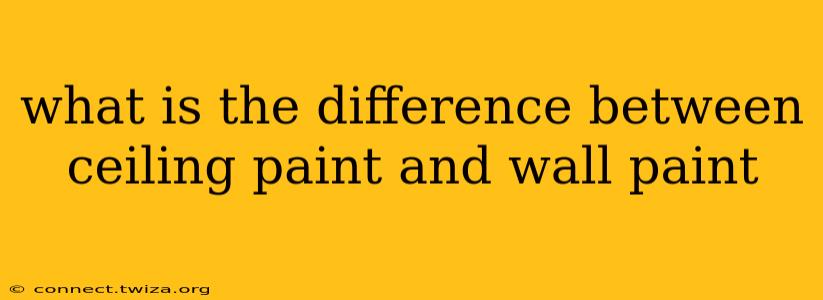What's the Difference Between Ceiling Paint and Wall Paint?
Choosing the right paint for your walls and ceiling can significantly impact the final look and longevity of your paint job. While both wall and ceiling paints share the same basic function – covering surfaces – key differences exist that make them suitable for their respective applications. Understanding these differences ensures a professional-looking finish that lasts.
1. Sheen/Finish:
This is perhaps the most significant difference. Ceiling paints typically have a flat or matte finish, minimizing the appearance of imperfections and providing a clean, even look. The flat finish hides flaws better because it doesn't reflect light as much as a glossier paint. Wall paints, on the other hand, offer a wider range of sheens, from matte and eggshell to satin, semi-gloss, and high-gloss. The choice depends on the desired aesthetic and level of durability needed; glossier finishes are more durable and easier to clean but will show imperfections more readily.
2. Hiding Power:
While both types of paint need to hide the underlying surface, ceiling paints are usually formulated with superior hiding power. Ceilings often have more texture or imperfections than walls, and a higher hiding power ensures a more even coat with less showing through. This means you might need fewer coats of ceiling paint compared to wall paint to achieve complete coverage.
3. Stain Resistance:
Ceiling paint isn't designed to withstand frequent cleaning, as ceilings typically don't encounter the same level of soiling as walls. Wall paints, especially those with higher sheens like satin or semi-gloss, are designed with better stain resistance for easier cleaning and maintenance. Spills and marks are more easily removed from these surfaces.
4. Drying Time:
Drying time can vary between brands and paint types, but generally, ceiling paints are formulated to dry relatively quickly to minimize disruption during the painting process. This faster drying time is advantageous for larger areas like ceilings.
5. VOC Content:
Volatile Organic Compounds (VOCs) are chemicals released into the air as paints dry. Both ceiling and wall paints are now available in low-VOC or zero-VOC formulations. However, choosing low-VOC options is beneficial for indoor air quality regardless of whether the paint is intended for walls or ceilings.
What if I use Wall Paint on the Ceiling?
While you can use wall paint on the ceiling, it's generally not recommended. Using a wall paint with a higher sheen on a ceiling might highlight imperfections and create an uneven appearance. The lower hiding power could also mean needing more coats, increasing labor costs and time.
What if I use Ceiling Paint on the Walls?
Using ceiling paint on the walls is possible, but the lack of stain resistance might be a drawback. You'll find it more challenging to clean marks and spills from the walls, impacting the longevity of the paint job. The flat finish may also feel less sophisticated or suitable for areas that see a lot of wear and tear.
